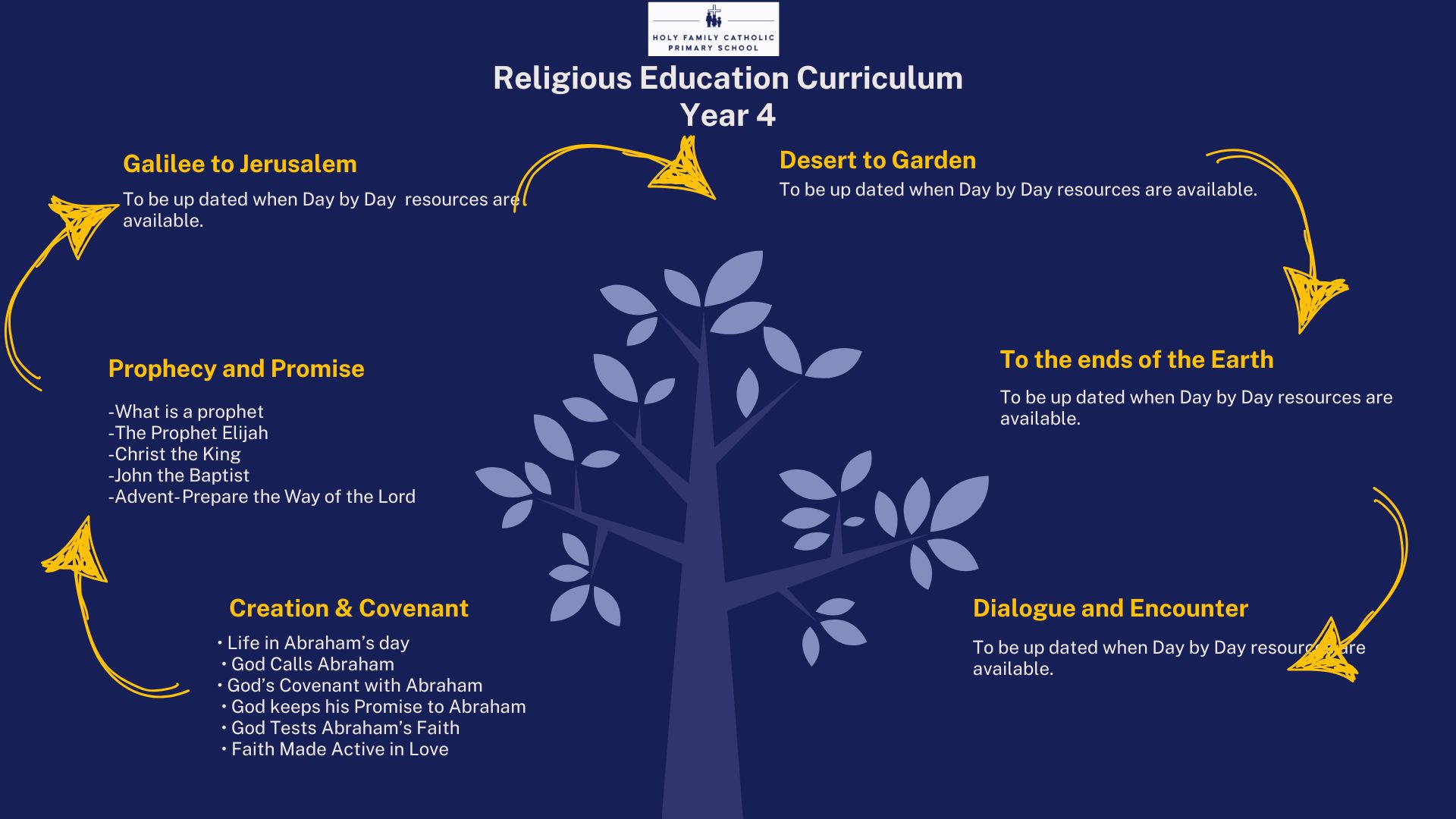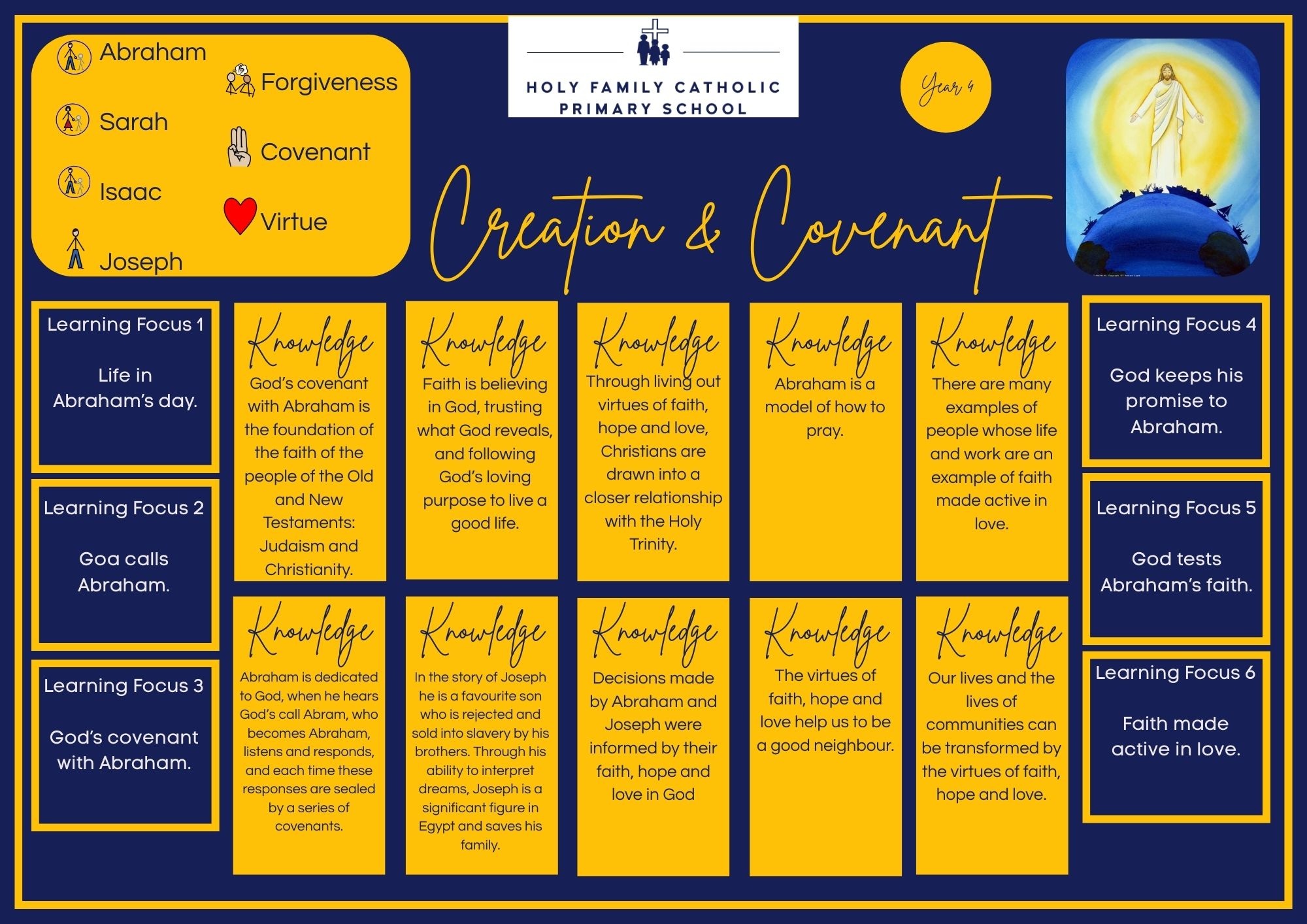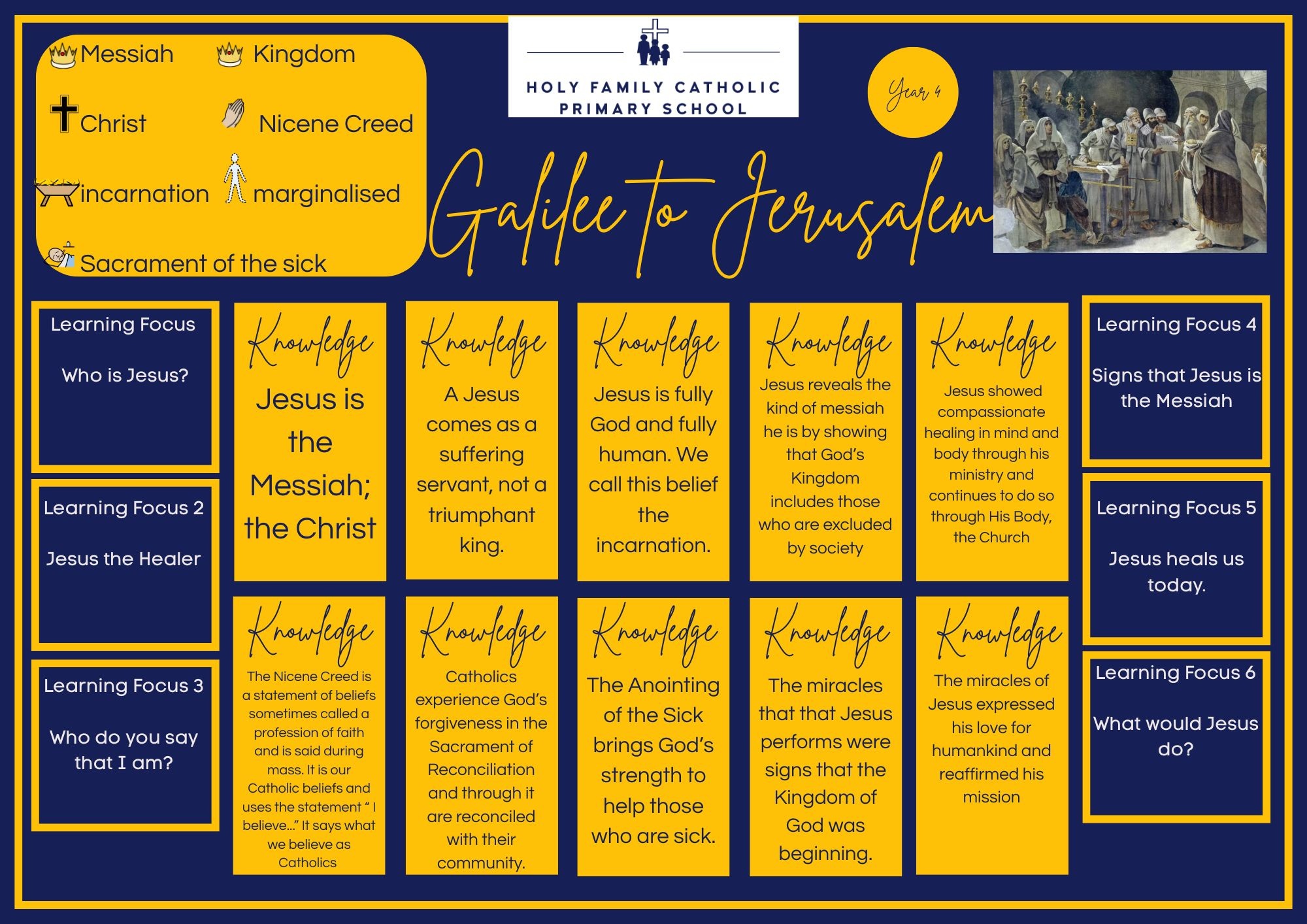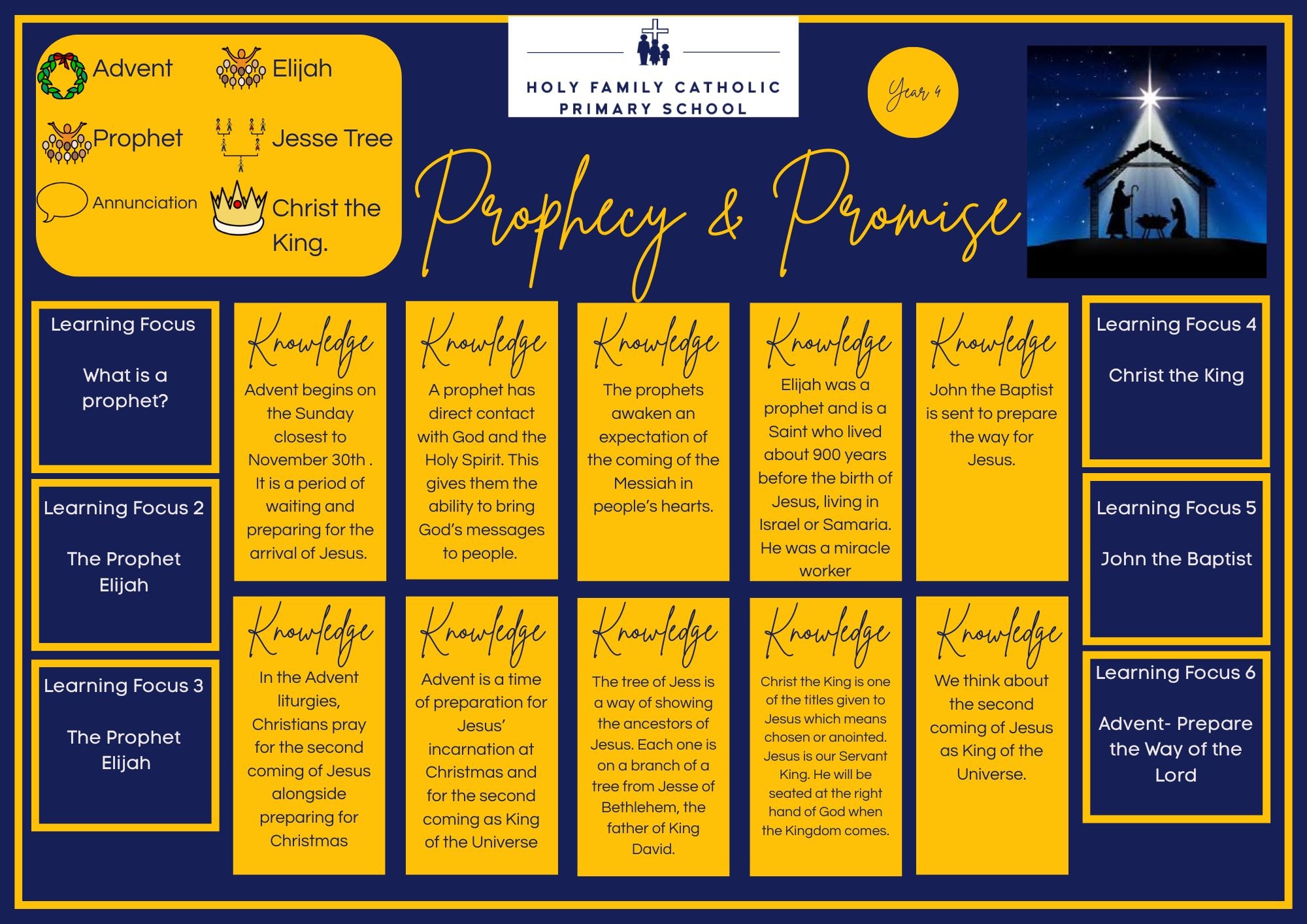Religious Education

In line with our fellow Diocesan schools, we follow the Diocesan lesson plans based on the new RED. This curriculum seeks to present the teaching of religious education in a sequential and progressive form. The framework has four structural elements:
- Knowledge lenses which indicate what should be known by the end of each age phase. These are split into hear, believe, live and celebrate.
- The ‘ways of knowing’ are the skills which develop as the children progress through their curriculum journey. These are split into understand, discern and respond.
- Expected outcomes are set for each age phase and indicate what pupils are expected to know, remember and be able to do.
- Curriculum branches are the way the programme of study presents its model curriculum. There are six half term branches for each half term which are the same in each year group.
Through this year the class will learn about people whose lives have been transformed by faith and hope in God.
In the first branch pupils will study Abraham and consider how he changed through acting on his faith and entered into a covenantal relationship with God. Learners will explore aspects of the story of Elijah whose story shows the importance of faith and hope in God even in desperate times. They will then make links between Elijah and John the Baptist.
In these branches, pupils will begin to explore hermeneutics. Learners will explore more about the type of messiah Jesus is and what it means to live a life in Christ. Through learning about the theological virtues of faith, hope, and love, they will encounter the belief that good deeds flow out of a love of God, people do not do good things and earn God’s love. They will revisit the lives of St Peter and St Paul with a focus on the theological virtues of faith, hope, and love and learn about the place of the Blessed Virgin Mary in the communion of saints.

Knowledge Organisers for each branch can be found below.




